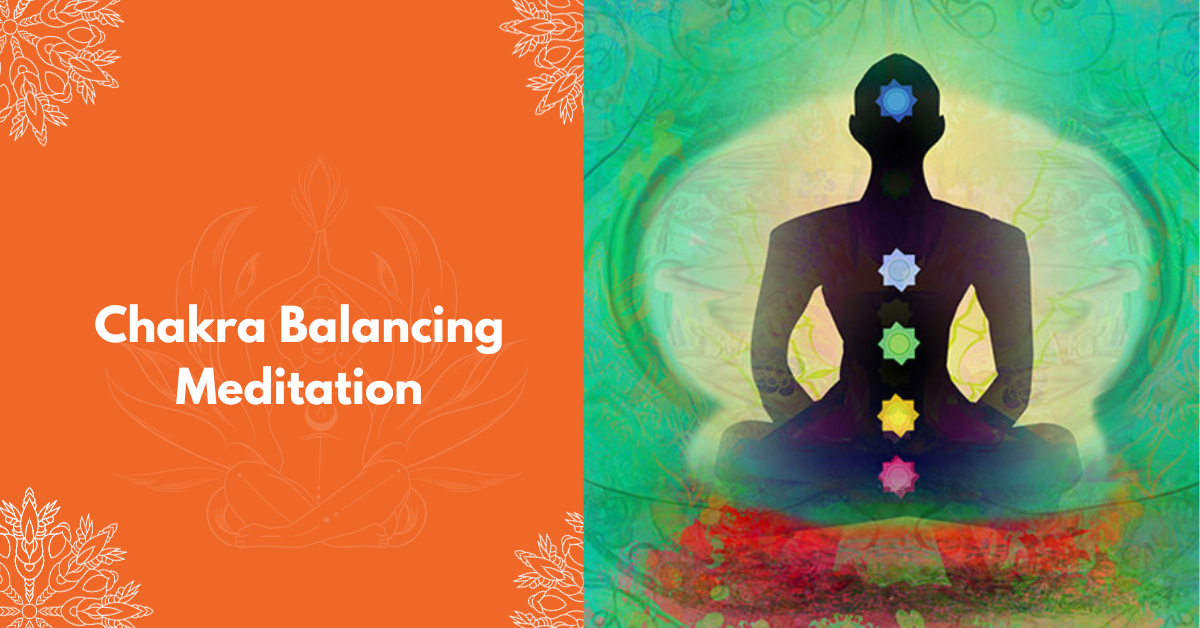
7 Best Main Chakra Balancing Meditation
Table of Contents
In the tapestry of life, amid the whirlwind of stress and insecurities, one quest remains constant – the pursuit of balance. Ancient India unveiled a profound secret: the wisdom of chakras.
Imagine seven vibrant energy centers within you, akin to spinning wheels, known as “chakras.” They hold the key to harmonizing your mind, body, and spirit.
Join us on a journey through vedansha , to deep into chakra balancing meditation. This voyage takes us inward, where equilibrium resides. Explore the mystical and practical aspects of this practice, connecting us to ancient Indian spirituality and offering a path to inner harmony in today’s bustling world.
Hook: The Quest for Balance and Harmony
In the tumultuous journey of life, we often find ourselves grappling with the relentless pursuit of balance and harmony. These elusive qualities are the threads that weave together the fabric of a contented existence. They are the calming balm that soothes the storms of stress and uncertainty, offering us solace in the midst of life’s chaos.
Unveiling Ancient Wisdom
Amid the tapestry of Indian spirituality lies a profound and timeless concept – the Chakra Balancing Meditation ,Picture these as seven radiant energy hubs, aligned along the spine, each akin to a spinning wheel or “chakra” in the Sanskrit language. These aren’t mere esoteric notions; they are the very essence of our inner world, holding the key to unlocking the harmonious symphony of mind, body, and spirit.
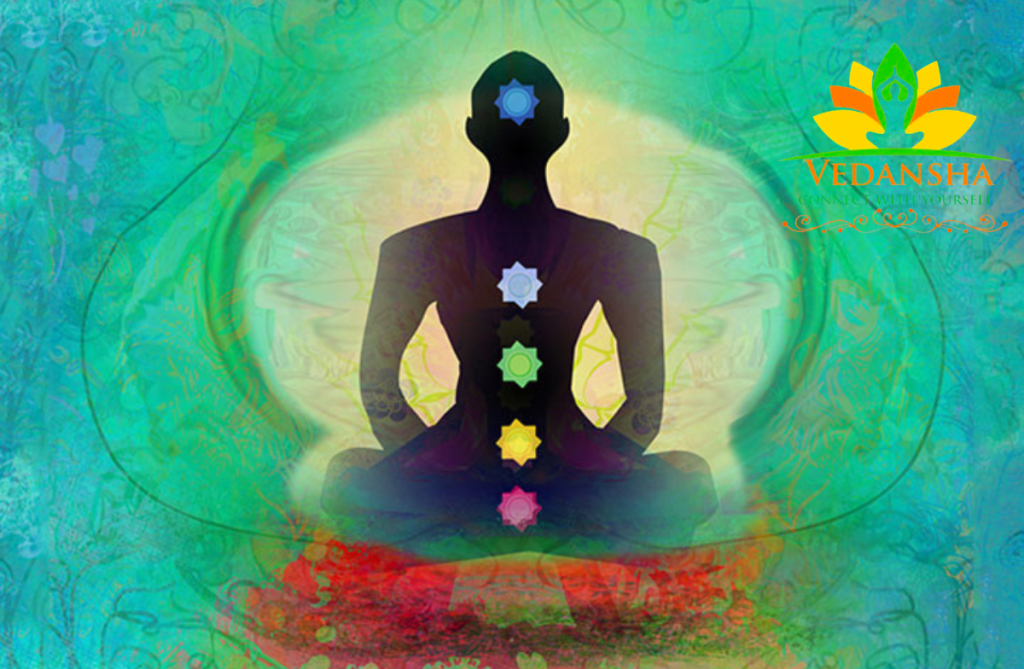
Understanding Chakras: Ancient Origins and Inner Energy Centers
Chakra Balancing Meditation, a fundamental concept in ancient Indian traditions, represent the subtle energy centers within our bodies. The word “chakra” itself originates from Sanskrit, meaning “wheel” or “disc.” These energy wheels are integral to various Indian spiritual practices, including Yoga, Tantra, and Ayurveda, dating back thousands of years.
The Seven Main Chakras: Centers of Vital Energy
There are seven primary chakras, each associated with specific regions of the body and unique qualities. Here, we introduce these energy centers and their respective locations:
- Root Chakra (Muladhara):
- Location: At the base of the spine, near the perineum.
- Qualities: Represents our foundation, security, and survival instincts. It governs feelings of stability, grounding, and connection to the physical world.
- Sacral Chakra (Svadhisthana):
- Location: In the lower abdomen, just below the navel.
- Qualities: Linked to creativity, emotions, and sensuality. It influences our capacity for pleasure, passion, and personal expression.
- Solar Plexus Chakra (Manipura):
- Location: Situated in the upper abdomen, near the diaphragm.
- Qualities: Governs self-confidence, personal power, and inner strength. It is associated with courage, willpower, and a sense of purpose.
- Heart Chakra (Anahata):
- Location: In the center of the chest, near the heart.
- Qualities: The seat of love, compassion, and emotional balance. It guides our capacity for empathy, forgiveness, and unconditional love.
- Throat Chakra (Vishuddha):
- Location: Positioned at the throat’s base, in the neck.
- Qualities: Linked to communication, self-expression, and truthfulness. It influences our ability to express ideas and emotions clearly.
- Third Eye Chakra (Ajna):
- Location: Found between the eyebrows, in the forehead’s center.
- Qualities: Associated with intuition, insight, and spiritual awareness. It enables us to perceive beyond the physical realm and access higher wisdom.
- Crown Chakra (Sahasrara):
- Location: At the top of the head, the crown area.
- Qualities: The highest chakra, representing spiritual connection, enlightenment, and transcendence. It leads to a profound sense of oneness and unity with the universe.
Each chakra is thought to spin at a different rate and vibrational frequency, and when they are in balance and alignment, they facilitate physical, emotional, and spiritual well-being. Understanding these energy centers and their attributes is a vital step in harnessing the power of chakra balancing meditation for personal growth and inner harmony.
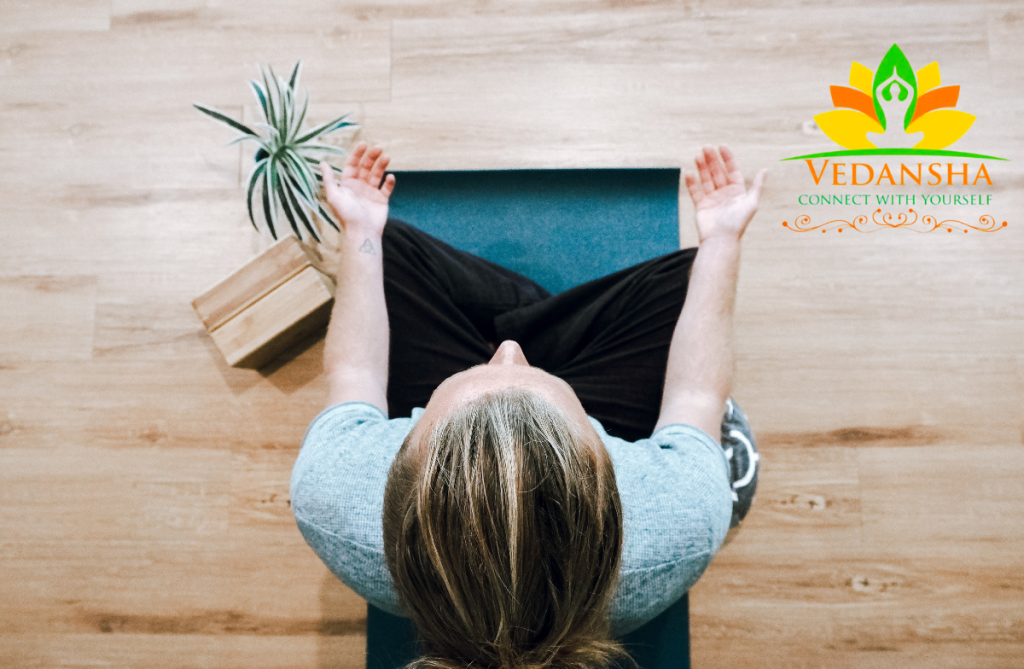
The Importance of Balanced Chakras for Holistic Well-being
Balanced chakras are fundamental to achieving and maintaining holistic well-being—spanning the realms of physical, mental, and spiritual health. Here’s why:
1. Physical Well-being:
- Vital Energy Flow: Chakras are conduits for vital life energy, often referred to as “prana” or “chi.” When balanced, they ensure the smooth flow of this energy throughout the body, promoting physical vitality and health.
- Organic Functionality: Each chakra is associated with specific organs and bodily functions. Balanced chakras support the optimal functioning of these systems, aiding in digestion, immune response, and overall physical vitality.
2. Mental Well-being:
- Emotional Equilibrium: Balanced chakras contribute to emotional stability and resilience. When our energy centers are in harmony, we are better equipped to handle stress, anxiety, and emotional upheavals.
- Clarity of Thought: The Third Eye Chakra, in particular, is linked to intuition and mental clarity. A well-functioning Third Eye enhances our decision-making abilities and fosters a deeper understanding of our thoughts and emotions.
3. Spiritual Well-being:
- Higher Consciousness: Chakras play a pivotal role in our spiritual journey. An open and balanced Crown Chakra Balancing Meditation connects us to higher states of consciousness, facilitating spiritual growth and enlightenment.
- Connection to the Divine: Spiritual practices often involve aligning and activating the Crown Chakra. When balanced, it deepens our sense of connection to the divine, fostering a profound sense of purpose and inner peace.
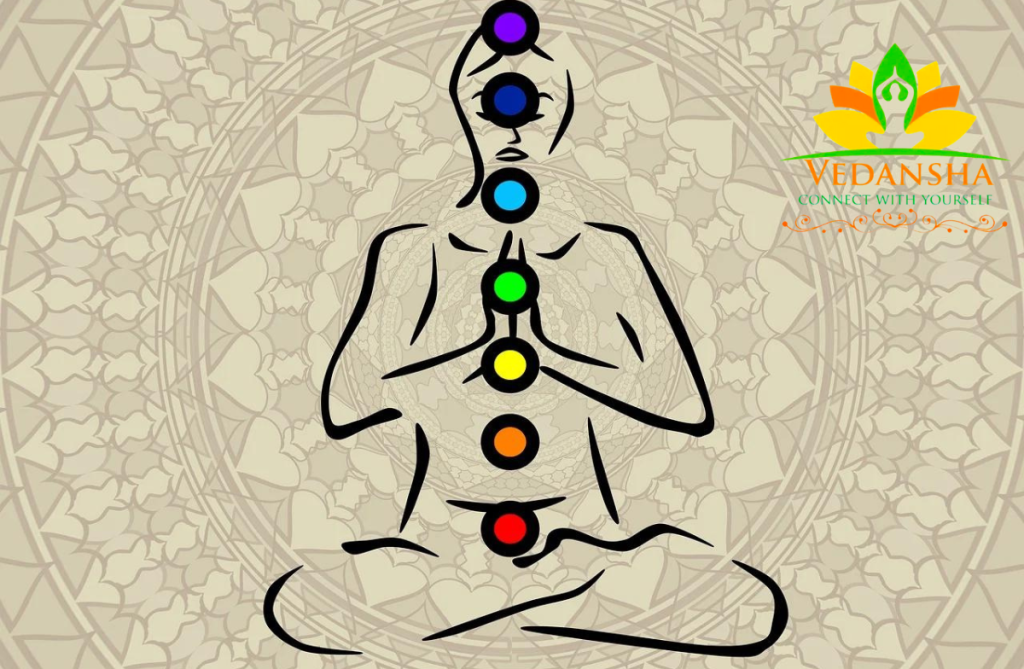
Consequences of Blocked or Overactive Chakras:
1. Physical Consequences:
- Illness and Ailments: Blocked chakras can disrupt the energy flow to specific organs, potentially leading to physical ailments or chronic health issues.
- Low Energy: When chakras are blocked, the overall energy level in the body may decrease, resulting in fatigue and a compromised immune system.
2. Emotional and Mental Consequences:
- Emotional Imbalance: Blocked or overactive chakras can lead to emotional imbalances, including anxiety, depression, or heightened emotional reactions.
- Mental Confusion: An unbalanced Third Eye Chakra Balancing Meditation can manifest as mental confusion, indecisiveness, or a lack of clarity in one’s thoughts.
3. Spiritual Consequences:
- Disconnectedness: An imbalanced Crown Chakra may lead to a feeling of disconnection from higher spiritual realms, hindering one’s spiritual growth.
- Lack of Purpose: A blocked Crown Chakra can result in a lack of direction and purpose in life, leaving one feeling adrift.
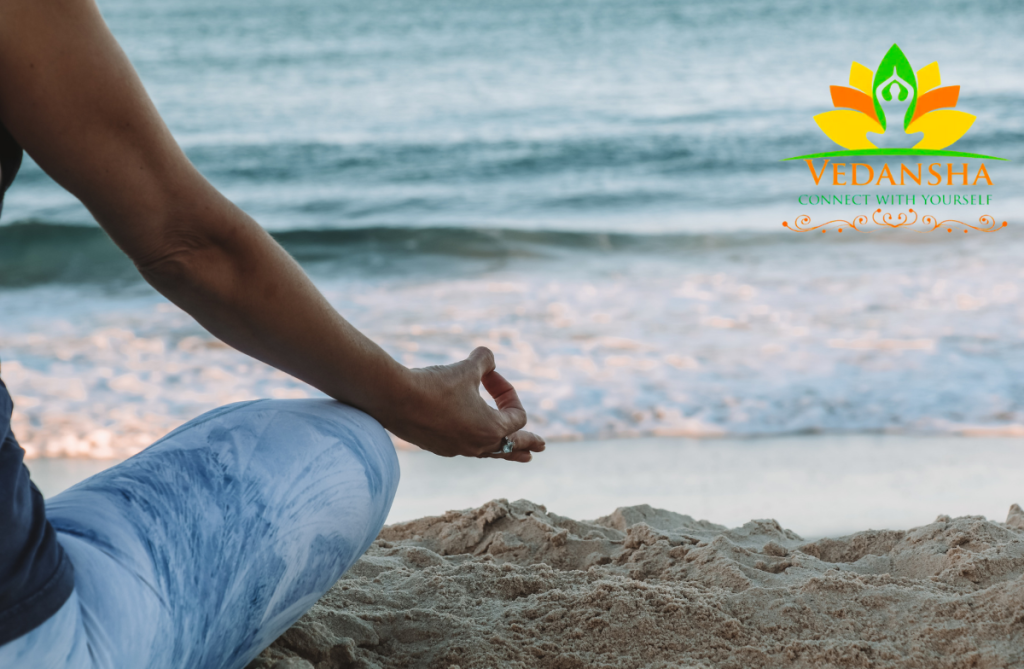
Real-life Examples and Anecdotes:
- Heart Chakra Healing: A person struggling with a history of emotional trauma and blocked Heart Chakra Balancing Meditation might find it challenging to form deep, meaningful relationships. Through chakra healing practices, they may experience emotional healing, leading to more fulfilling connections.
- Solar Plexus Chakra and Confidence: Imagine an individual with an overactive Solar Plexus Chakra, constantly seeking external validation. This imbalance can lead to burnout and dissatisfaction in their career. Through chakra balancing, they can regain their self-confidence and find a healthier work-life balance.
- Third Eye Intuition: A real-life example could involve someone who, after balancing their Third Eye Chakra through meditation and mindfulness, gains heightened intuition, making better decisions in their personal and professional life.
These examples illustrate how chakra imbalances can manifest in various aspects of life and how addressing these imbalances can lead to positive transformations and a renewed sense of well-being. Chakra Balancing Meditation whether through meditation, yoga, or energy healing, offers a path to holistic health and self-discovery.
Chakra Balancing Meditation Techniques
1. Significance and Role in Grounding:
The Root Chakra, known as Muladhara in Sanskrit, is the foundational energy center located at the base of the spine. It serves as our anchor to the physical world and is responsible for feelings of security, stability, and a strong connection to the Earth. Balancing the Root Chakra is crucial for establishing a solid foundation for overall well-being.
2. Specific Meditation Techniques for Balancing the Root Chakra:
- Visualization: Find a quiet space to sit or lie down comfortably. Close your eyes and visualize a vibrant red energy ball at the base of your spine, where the Root Chakra resides. Picture this energy ball growing larger and more radiant with each breath, grounding you deeply into the Earth.
- Mantra Meditation: The Root Chakra’s associated mantra is “LAM.” While meditating, chant this sound either aloud or silently. As you do, imagine its vibrations resonating at the base of your spine, reinforcing your connection to the Earth.
- Root Chakra Affirmations: Repeat affirmations related to security and stability, such as “I am safe,” “I am grounded,” or “I am supported.” Visualize these affirmations taking root within you.

3. Practical Tips for Incorporating These Techniques into Daily Life:
- Grounding Exercises: Engage in grounding activities like walking barefoot on grass or soil, gardening, or spending time in nature. These activities physically connect you to the Earth and help balance the Root Chakra.
- Use Red: Incorporate the color red into your daily life, whether by wearing red clothing, decorating your space with red accents, or choosing red foods like tomatoes or strawberries. This color stimulates the Root Chakra.
- Yoga and Physical Activity: Practicing yoga poses that focus on the lower body, such as standing poses like Tadasana (Mountain Pose) and Virabhadrasana (Warrior Pose), can help ground your energy. Regular physical exercise, particularly walking or hiking, can also promote Root Chakra Balancing Meditation
- Mindful Eating: Pay attention to your diet, emphasizing nourishing, whole foods. Root vegetables like carrots and beets are particularly grounding. Practice mindful eating to savor each bite and enhance your connection to the physical world.
- Affirmations: Repeat Root Chakra affirmations throughout your day, especially during moments of stress or uncertainty. Doing so can provide a sense of stability and reassurance.
Balancing your Root Chakra is the first step in aligning your chakra system and establishing a solid foundation for your overall well-being. These meditation techniques and practical tips can help you ground yourself, feel secure, and maintain a strong connection to the Earth, allowing you to navigate life’s challenges with greater stability and resilience.
Sacral Chakra (Svadhisthana):
1. Connection to Creativity and Emotions:
The Sacral Chakra, known as Svadhisthana in Sanskrit, is the second energy center located in the lower abdomen, just below the navel. It is closely associated with creativity, emotions, and the expression of one’s desires. This chakra plays a vital role in our ability to experience and channel creative energy, as well as to navigate and express our emotions in a healthy way.
2. Meditation Practices for Balancing the Sacral Chakra:
Balancing the Sacral Chakra involves opening it to release emotional blockages and enhance creativity. Here are meditation techniques to help with this:
- Visualization: Find a quiet, comfortable space to sit or lie down. Close your eyes and focus on your Sacral Chakra’s location. Visualize a warm, glowing, orange energy ball in this area. Imagine it expanding with each breath, cleansing and balancing your emotional and creative energies.
- Chakra Sound Meditation: The Sacral Chakra’s associated sound is “VAM.” During meditation, chant this sound either aloud or silently. As you do, feel the vibrations resonating in your lower abdomen, clearing any emotional or creative stagnation.
- Sacral Chakra Affirmations: Repeat affirmations that align with the qualities of the Sacral Chakra, such as “I am creative,” “I embrace my emotions,” or “I express myself freely.” Meditate on these affirmations to reinforce positive energy.
3. Exercises and Activities to Support the Balancing Process:
- Creative Expression: Engage in creative activities that resonate with you, such as painting, drawing, dancing, writing, or playing a musical instrument. These activities stimulate the Sacral Chakra and help release creative energy.
- Emotional Journaling: Maintain a journal to explore and express your emotions. Write freely, without judgment, to release pent-up feelings and gain insights into your emotional landscape.
- Yoga for the Sacral Chakra: Practice yoga poses that target the lower abdomen, hips, and pelvis, such as hip-opening poses like Baddha Konasana (Bound Angle Pose) or hip circles. These poses can help release emotional tension stored in the Sacral Chakra.
- Dance Therapy: Dancing, especially in a freeform and expressive manner, can activate and balance the Sacral Chakra. Dance to music that resonates with your emotions, allowing them to flow through your body.
- Healing Crystals: Crystals like carnelian, orange calcite, or moonstone are associated with the Sacral Chakra. You can meditate with these crystals or carry them with you to support Chakra Balancing Meditation.
Solar Plexus Chakra (Manipura):
Impact on Confidence and Personal Power:
The Solar Plexus Chakra, or Manipura in Sanskrit, is the third chakra located in the upper abdomen, just above the navel. It is closely tied to one’s sense of self-worth, confidence, and personal power. When the Solar Plexus Chakra Balancing Meditation, it empowers you with a strong sense of self-esteem, confidence, and the ability to assert yourself in a healthy way.
Confidence: A balanced Solar Plexus Chakra instills self-assurance and the belief in your own abilities. It allows you to approach challenges with confidence and a positive self-image.
Personal Power: This chakra is also associated with personal power, which involves the ability to make decisions, set boundaries, and take control of your life. When the Solar Plexus Chakra is balanced, you feel empowered and in control of your destiny.
Meditation Methods for Balancing the Solar Plexus Chakra:
Balancing the Solar Plexus Chakra involves meditation techniques that boost self-confidence and personal power:
- Visualization: Find a quiet place and sit or lie down comfortably. Close your eyes and focus on the Solar Plexus Chakra area just above your navel. Visualize a bright, golden sun radiating warmth and energy in that region. Imagine this sun growing brighter with each breath, filling your entire abdominal area with confidence and personal power.
- Chakra Mantra: The mantra associated with the Solar Plexus Chakra is “RAM.” Sit in a meditative posture, and with each inhalation, mentally or audibly chant “RAM.” As you do this, feel the vibrations resonating in your Solar Plexus Chakra, cleansing and balancing your sense of personal power and self-esteem.
- Affirmations: During meditation, repeat affirmations that align with the Solar Plexus Chakra, such as “I am confident,” “I am powerful,” or “I trust my decisions.” These affirmations help reprogram your mindset and reinforce positive beliefs.
Suggestions for Self-Reflection and Empowerment:
- Journaling: Reflect on your strengths, accomplishments, and moments when you’ve felt confident and empowered. Journaling can help you identify patterns and areas where you’d like to enhance your confidence and personal power.
- Setting Boundaries: Practice setting healthy boundaries in your personal and professional life. This involves saying “no” when necessary and advocating for your needs and desires.
- Goal Setting: Set achievable goals for yourself, both short-term and long-term. As you achieve these goals, your confidence and sense of personal power will naturally increase.
- Visualization: Regularly visualize yourself confidently and successfully navigating various life situations. This mental rehearsal can boost your self-assurance in real-life scenarios.
- Positive Self-Talk: Monitor your inner dialogue and replace self-doubt with self-affirming thoughts. Encourage yourself, remind yourself of past successes, and avoid self-criticism.
Balancing the Solar Plexus Chakra enhances your self-confidence, personal power, and ability to assert yourself in a healthy and empowered way. Through meditation, self-reflection, and empowerment practices, you can cultivate a strong and positive sense of self-esteem, empowering you to face life’s challenges with confidence and self-assuredness.
Crown Chakra (Sahasrara):
Link to Spiritual Connection and Enlightenment:
The Crown Chakra, known as Sahasrara in Sanskrit, is the seventh and highest chakra located at the top of the head. It is often associated with spiritual connection, enlightenment, and the transcendence of the ego. When the Crown Chakra is balanced and open, it allows for a profound connection to the divine, a heightened sense of spiritual awareness, and a deep understanding of the interconnectedness of all things.
Spiritual Connection: The Crown Chakra serves as the gateway to spiritual realms. It connects you to a higher power, the universe, or your own understanding of the divine. A balanced Crown Chakra fosters a sense of unity and oneness with the cosmos.
Enlightenment: This chakra is linked to enlightenment, a state of heightened consciousness and wisdom. When the Crown Chakra is in harmony, it can lead to profound insights, inner peace, and a sense of purpose that transcends the material world.
Meditation Methods to Awaken and Balance the Crown Chakra:
Balancing and awakening the Crown Chakra involves meditation practices that encourage spiritual connection and transcendence:
- Silent Meditation: Find a quiet, peaceful space to sit comfortably with your spine straight. Close your eyes and focus your attention on the top of your head, where the Crown Chakra is located. Breathe deeply and silently repeat a sacred word or mantra of your choice, such as “Om” or “Aum.” As you meditate, allow your awareness to expand beyond the confines of your physical body, connecting with the infinite.
- Visualization: During meditation, envision a brilliant, radiant white or violet light above your head, representing the energy of the Crown Chakra. Imagine this light descending slowly and gently entering your body through the top of your head. Feel it illuminating your entire being, purifying and balancing your chakra.
- Crown Chakra Affirmations: Incorporate affirmations that align with the Crown Chakra, such as “I am connected to the divine,” “I am one with the universe,” or “I am open to higher wisdom.” Repeating these affirmations during meditation reinforces your spiritual connection.
Encouragement to Explore Your Spiritual Path:
- Self-Reflection: Take time for self-reflection to explore your beliefs, values, and spiritual experiences. Consider what spirituality means to you and how you wish to nurture your connection with the divine or higher consciousness.
- Mentorship and Guidance: Seek out spiritual mentors, teachers, or communities that resonate with your beliefs and values. Learning from others who have walked the spiritual path can be enriching and inspiring.
- Mindfulness and Presence: Incorporate mindfulness practices into your daily life. Cultivate awareness of the present moment, as it is in the present that spiritual connection often unfolds.
- Nature and Solitude: Spend time in nature and in solitude to foster a deeper connection with the universe. Nature has a way of reminding us of our interconnectedness and the beauty of the world beyond our egos.
Benefits of Chakra Balancing Meditation
Physical Benefits:
- Increased Energy Levels: Balancing the chakras may lead to increased vitality and stamina, helping individuals feel more energetic and alert in their daily lives.
- Improved Physical Health: Some people report relief from certain physical ailments and discomforts after regular chakra meditation. It is believed that balanced chakras can support overall well-being.
- Enhanced Relaxation: Chakra meditation techniques often involve deep relaxation, which can help reduce stress and tension, leading to better physical health.
Emotional Benefits:
- Stress Reduction: Chakra Balancing Meditation can help individuals manage stress and anxiety more effectively, promoting a sense of calm and emotional stability.
- Emotional Healing: Some practitioners believe that chakra meditation can aid in the processing and release of past emotional traumas and negative emotions, leading to emotional healing.
- Increased Self-Awareness: Regular meditation on the chakras may enhance self-awareness, helping individuals better understand and manage their emotions and reactions.
Spiritual Benefits:
- Heightened Intuition: Chakra meditation is often associated with improved intuition and a deeper connection to one’s inner wisdom and spiritual guidance.
- Balanced and Harmonized Energy: Practitioners often claim a sense of balance and harmony in their lives, both internally and externally, as a result of regular chakra meditation.
- Spiritual Growth: Chakra meditation is considered a tool for personal and spiritual growth, helping individuals on their journey toward self-discovery and self-realization.
1. Restlessness and Distractions:
- Challenge: It’s common to experience restlessness and distractions during meditation, especially if you’re new to the practice.
- Solution:
- Start with short meditation sessions and gradually increase the duration as your focus improves.
- Use guided chakra meditation recordings or apps to help maintain your concentration.
- Acknowledge distractions without judgment and gently redirect your attention back to the chakra or breath you’re focusing on.
2. Difficulty Sensing or Visualizing Chakras:
- Challenge: Some people may have trouble sensing or visualizing their Chakra Balancing Meditation, which can make the practice less effective.
- Solution:
- Begin with guided chakra meditations that provide detailed descriptions and visualizations of each chakra.
- Use affirmations or mantras related to each chakra to enhance your connection to them.
- Be patient and consistent in your practice; over time, your sensitivity to chakra energy may increase.
3. Impatience and Frustration:
- Challenge: Impatience can be a significant obstacle when seeking immediate results from chakra meditation.
- Solution:
- Set realistic expectations. Chakra meditation is a gradual process, and results may not be immediate.
- Focus on the journey rather than the destination. Enjoy the practice itself, and let go of attachment to specific outcomes.
- Remind yourself that consistency is key. Daily practice, even for a short duration, can lead to long-term benefits.
4. Physical Discomfort:
- Challenge: Physical discomfort, such as stiffness or pain from sitting in one position, can hinder meditation.
- Solution:
- Choose a comfortable and supportive meditation posture, such as sitting on a cushion or chair.
- Incorporate gentle stretching or yoga exercises before your meditation to alleviate physical tension.
- Experiment with lying down if sitting is too uncomfortable, but be mindful of the potential for falling asleep.
5. Overactive Mind:
- Challenge: Racing thoughts or a busy mind can make it challenging to focus during chakra meditation.
- Solution:
- Practice mindfulness by observing your thoughts without judgment and then gently redirect your attention to your chosen focal point (e.g., chakra or breath).
- Use breath control techniques like counting breaths or following the inhale and exhale to anchor your mind.
- Consider journaling before or after your meditation to release any racing thoughts.
6. Inconsistency in Practice:
- Challenge: Maintaining a consistent meditation practice can be difficult due to a busy schedule or lack of motivation.
- Solution:
- Schedule your meditation at the same time each day to establish a routine.
- Start with a short duration (even 5-10 minutes) if you’re short on time, and gradually increase it as you build the habit.
- Find a meditation buddy or join a group to stay motivated and accountable.
7. Doubt and Skepticism:
- Challenge: Some individuals may doubt the effectiveness or relevance of chakra meditation.
- Solution:
- Approach chakra meditation with an open mind and willingness to explore its potential benefits.
- Study the philosophy and history behind chakra meditation to gain a deeper understanding.
- Experiment with the practice over an extended period to gauge its impact on your well-being.
Conclusion: Finding Inner Harmony Through Chakra Balancing
In our quest for balance and inner peace, chakra balancing meditation offers a profound and ancient roadmap. From the root to the crown, we explored the power of our energy centers, unlocking confidence, creativity, and spiritual connection. As we conclude this journey, remember that chakra balancing is an ongoing path of self-discovery, empowering you to embrace life’s harmony. Your inner world is a tapestry of potential, waiting to be woven into a harmonious symphony. Continue to explore, meditate, and grow, for the journey toward inner harmony is a lifelong adventure.
Certainly! Here are some frequently asked questions (FAQs) about chakra balancing:
1. What are chakras?
- Chakras are believed to be energy centers or wheels of energy within the body, according to ancient Indian philosophy. There are seven main chakras, each associated with specific aspects of physical, emotional, and spiritual well-being.
2. What is chakra balancing?
- Chakra balancing is a practice aimed at aligning and harmonizing the energy flow in the chakras. It involves various techniques, such as meditation, visualization, yoga, and energy healing, to ensure that the chakras are functioning optimally.
3. Why is chakra balancing important?
- Chakra balancing is thought to promote overall well-being by improving physical health, emotional stability, and spiritual growth. It is believed that balanced chakras can enhance energy flow, reduce stress, and support inner harmony.
4. How can I tell if my chakras are imbalanced?
- Imbalanced chakras can manifest as physical, emotional, or spiritual issues. For example, an overactive or underactive throat chakra may result in communication difficulties. Paying attention to physical symptoms, emotions, and life challenges can provide clues about potential imbalances.
5. What are some signs of balanced chakras?
- Balanced chakras are associated with a sense of inner peace, emotional stability, and physical well-being. When chakras are in harmony, individuals often experience improved energy levels, better communication, and a deeper connection to their spiritual selves.

